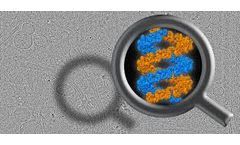Dopamine Articles & Analysis
18 articles found
APIs for Parkinson's Disease: Continuing the Fight Against Neurodegeneration Parkinson's disease, a progressive neurodegenerative disorder, manifests through symptoms such as bradykinesia, muscle rigidity, and tremors. A deficiency of dopamine—due to the degeneration of dopamine neurons in the brain's substantia nigra—is chiefly responsible for these ...
Inotropes (I1) Inotropes such as dobutamine, milrinone, dopamine, and levosimendan are frequently used in patients with ADHF showing inadequate response to diuretics. ...
Some bacteria can also synthesize neurotransmitters, such as dopamine and acetylcholine, which may affect neural activity in the brain. ...
Alzheimer’s and Parkinson’s disease are both neurological diseases that cause progressive damage to the brain, resulting in a decline in neurocognitive function. While Parkinson’s disease is known for affecting movement and function and Alzheimer’s disease is known for affecting cognition, they are a bit more complex than that. Below, we provide an overview of ...
It primarily impacts dopaminergic, or dopamine-producing, neurons in a specific area of the brain known as the substantia nigra. ...
Whether you are eating a delicious meal, sharing a kiss with someone you love, or enjoying a sugary treat, the mesolimbic dopamine system activates, releasing dopamine (a feel-good brain chemical) and reinforcing that behavior. ...
PANDAS autoantibody The positive rates of three autoantibodies, α-dopamine receptor D1 (a-D1R), calcium/calmodulin-dependent protein kinase CaMKII, and anti-streptavidin O, in the serum of PANDAS patients were 71.4%, 71.4%, and 60.0%, respectively. ...
Various compounds ranging from caffeine and dopamine to heroin, tetrahydrocannabinol (THC) and lysergic diethylamine (LSD) all bind to these receptors. ...
Parkinson's disease is a progressive neurodegenerative disease caused by the death of dopamine-producing cells in the brain. More than 10 million people worldwide suffer from Parkinson's disease. ...
Previous evidence has revealed that the mesocorticolimbic circuitry, including the prefrontal cortex (PFC) and mesolimbic dopamine (DA) pathway are particularly susceptible to THC-induced pathologic alterations, including dysregulation of DAergic activity states, loss of PFC GABAergic inhibitory control and affective and cognitive abnormalities. ...
This review will examine the relationship between CBD, omega-3s, and PPARs and how they may be implicated in the modulation of mesocorticolimbic DAergic abnormalities and associated neuropsychiatric symptoms. Keywords cannabinoids, dopamine, GABA, nucleus accumbens, omega-3 fatty acids, PPAR, prefrontal cortex, ventral tegmental ...
Wendy Suzuki explain that when you exercise, chemicals such as dopamine and serotonin are released in your brain. These chemicals make you feel happiness and pleasure. ...
Small things like: choosing a different magazine than usual, trying a new yoga pose or a new flavour of tea, rearranging your furniture, listening to a new music genre or learning a new song on your old guitar release a little dopamine inside your novelty-loving brain. So, do what you can to feed your brain with new impressions. ...
However, the full range of its therapeutic properties is not completely understood, as levodopa is showing itself to be more than just a metabolic intermediate for dopamine synthesis. Improving the constancy of drug delivery is the next frontier for enhancing therapeutic options with levodopa. ...
The antidepressant bupropion is designed to alter brain norepinephrine and dopamine concentrations in humans. The objective of this work was to understand if alteration of dopaminergic neurotransmitter concentrations in the hybrid striped bass (Morone saxatilis x. ...
Since their mode of action is thought to be by modulation of the neurotransmitters serotonin, dopamine, and norepinephrine, aquatic invertebrates that possess transporters and receptors sensitive to activation by these pharmaceuticals are potentially affected by them. ...
The results revealed significant reductions of whole‐body dopamine (DA) content and its metabolite, dihydroxyphenylacetic acid (DOPAC) content in DE‐71‐exposed larvae. ...
We propose that the involvement of DDC in a new pathway involved in Drosophila immunity increases the levels of dopamine, which is metabolized to produce reactive quinones that exert an antimicrobial effect on invading ...












